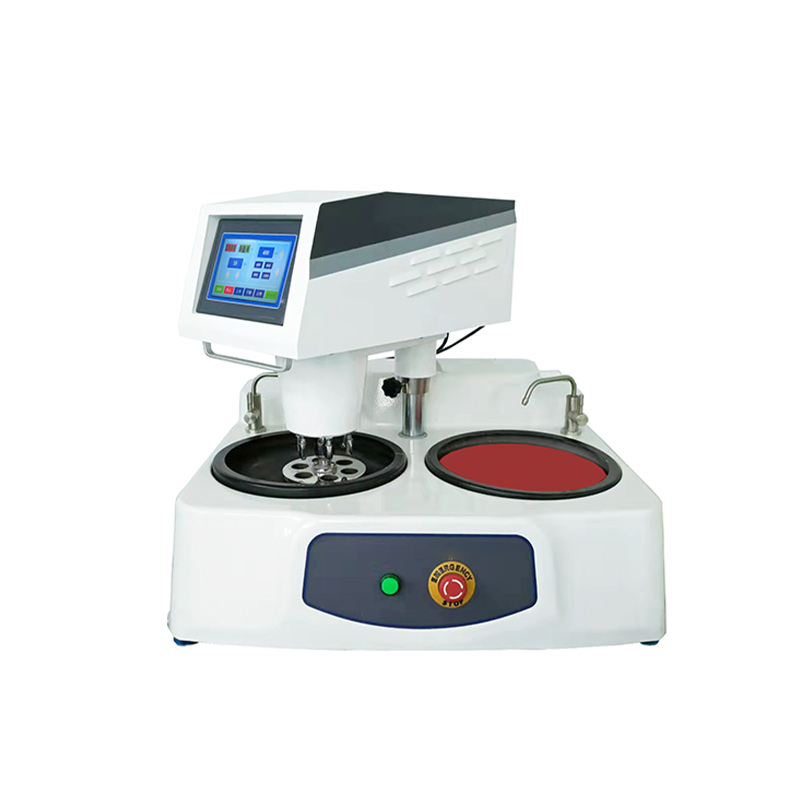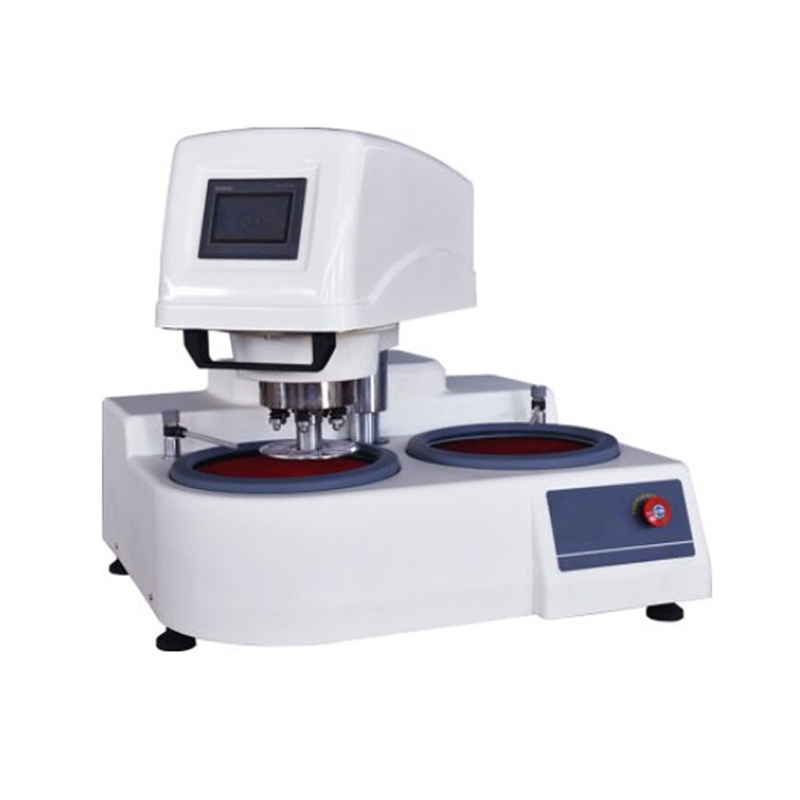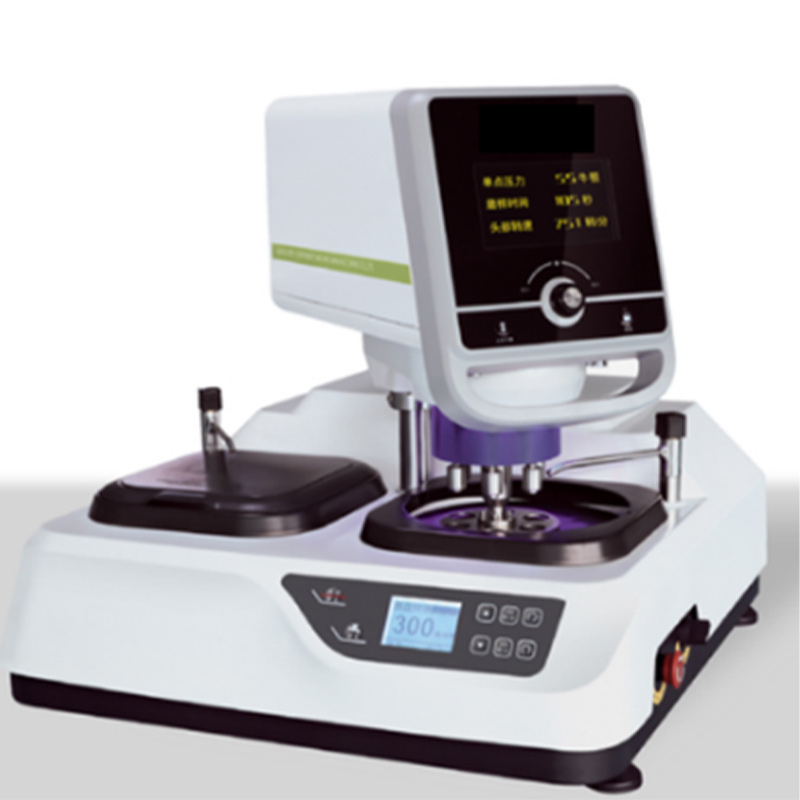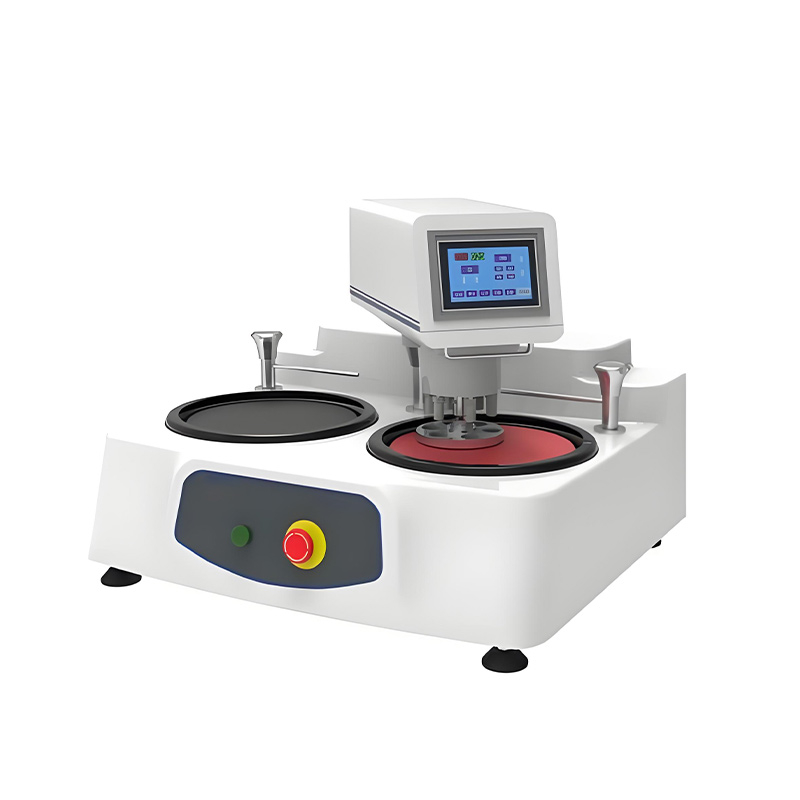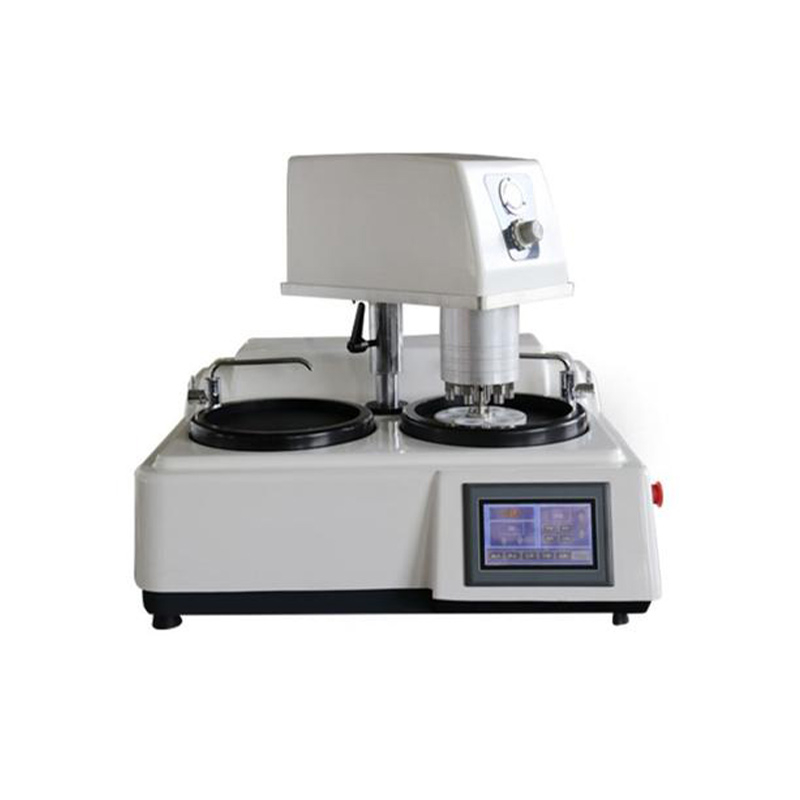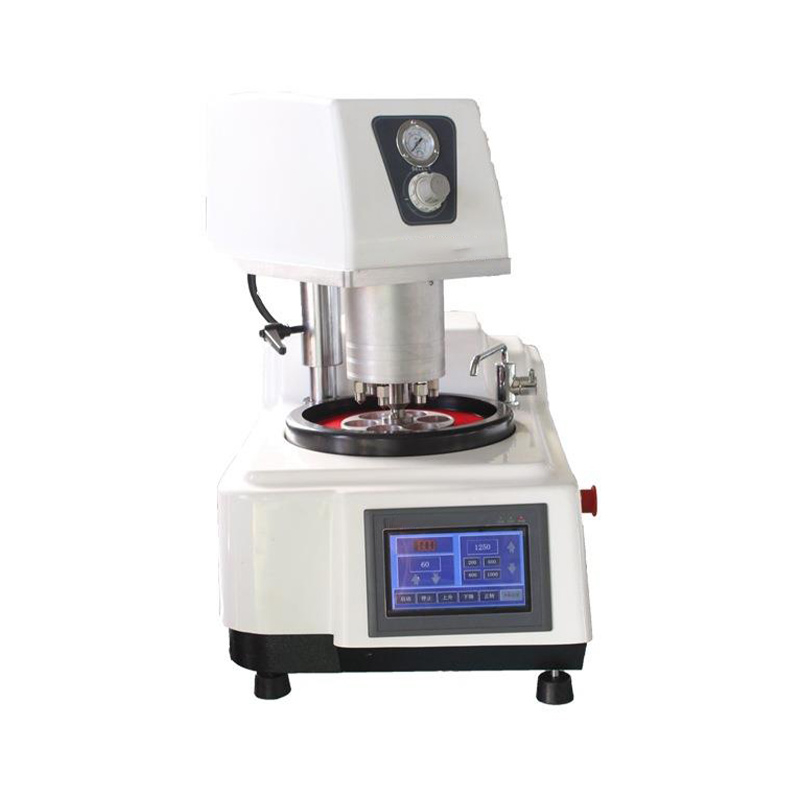Introduction
This automatic grinding and polishing machine is a double-disc desktop machine. It is a new generation of high-precision, automated sample preparation process grinding and polishing equipment manufactured according to international standards and using international advanced process technology.
This machine uses an advanced microprocessor control system, which makes the speed of the grinding and polishing disc and grinding and polishing head steplessly adjustable, and the sample preparation pressure and time settings are intuitive and convenient. The operator only needs to replace the grinding and polishing disc or metallographic sandpaper and polishing fabric to complete the grinding and polishing process, which makes the machine more widely applicable. This machine has the functions of arbitrary selection of the grinding and polishing disc rotation direction, quick replacement of the grinding and polishing disc; multiple sample holders and pneumatic single-point loading; automatic abrasive distribution (dispenser optional), etc. It also has the characteristics of stable rotation, safety and reliability, low noise, and the use of cast aluminum base to increase the rigidity of grinding and polishing.
This machine is equipped with a water cooling device and an abrasive flushing nozzle, which can cool the sample during grinding to prevent the metallographic structure from being damaged due to overheating of the sample and flush away the abrasive at any time; it is equipped with an ABS shell and stainless steel standard parts, which makes it more beautiful in appearance, improves the anti-corrosion and anti-rust performance and is easy to clean.
Application
This automatic grinding and polishing machine is suitable for automatic sample preparation in the process of rough grinding, fine grinding, rough polishing to fine polishing of metallographic samples. It is an ideal sample preparation equipment for enterprises, scientific research institutions and laboratories of colleges and universities..
Purchase information
If you are interested in our automatic grinding and polishing machine, please contact us for more information.
· Tel:138 3857 9492
· Email:carol@cysitech.com
· Contact:Carol Xu
· Wechat:15290599353
· WhatsApp/Skype: 13838579492
Technical parameters:
Product name | Automatic Grinding and Polishing Machine |
Product model | CY-MP-3S |
Grinding and polishing disc | φ250mm (φ203mm can be customized) |
Rotating speed of polishing disc | 50~1000r/min (stepless speed regulation); 150 r/min, 300 r/min (two-stage constant speed) |
Rotating direction of polishing disc | Clockwise or counterclockwise adjustable |
Rotating speed of polishing head | 50~150r/min (stepless speed regulation) |
Loading range | 5~60N |
Compressed air pressure | 0.6~0.9Mpa |
Sample preparation time | 0~995 S |
Sample size | φ30mm (φ22mm, φ25mm, φ30mm, φ40mm, φ45mm, φ50mm can be customized) |
Maximum number of samples prepared each time | 6 pieces |
Power supply | Single-phase AC220V 50Hz |
Input power | 1.1KW |
Dimension | 758×785×680mm |
Net weight | 130kg |
Case: Double-sided grinding and polishing of optical lenses
1. Equipment configuration
Double-disc grinding and polishing machine: The equipment is equipped with two relatively rotating grinding discs, which can grind the two surfaces of the optical element at the same time in a short time.
Grinding discs and polishing liquid: Use polishing liquids and abrasives of different particle sizes. Use larger particles of aluminum oxide or silicon oxide for rough grinding, use fine particles of aluminum oxide suspension for fine grinding, and finally use ultra-fine particles of polishing liquid (such as cerium oxide) for smooth polishing.
Temperature control system: During the polishing process, the temperature control of the polishing liquid is very important for the surface quality. The equipment is equipped with a temperature control system to ensure that the temperature is within the appropriate range to avoid thermal damage.
2. Operation process
Preliminary preparation
Optical element preparation: Clean the optical lens to ensure that there are no larger particles of contaminants. For larger optical elements, preliminary rough processing may be required to remove most of the surface unevenness.
Equipment commissioning: Set parameters such as grinding disc speed, pressure, and liquid flow. For optical components, lower pressure is usually required to avoid scratches or damage to the surface.
Grinding and Polishing Process
Rough Grinding Stage:
Purpose: Remove larger defects on the surface of optical lenses, such as scratches, particles and uneven oxide layers.
Operation: Use a large-grained polishing liquid (such as aluminum oxide or silicon oxide with coarse particles) to grind the lens surface. The grinding wheel speed is usually set to 50-70 rpm and the pressure is 1-2 psi.
Time Control: The rough grinding stage usually takes a long time to ensure the surface is flat, but at the same time, over-grinding needs to be avoided.
Fine Grinding Stage:
Purpose: Further remove minor surface defects and refine the surface flatness.
Operation: In this stage, a fine-grained polishing liquid, such as aluminum oxide or silicon dioxide solution, is used to gradually refine the surface. The grinding wheel speed is reduced to 40-60 rpm, and the pressure is appropriately reduced to reduce the impact on the surface of the optical component.
Surface Inspection: During the fine grinding stage, the surface quality is checked by a microscope or surface roughness meter to ensure that there are no obvious defects.
Smooth polishing stage:
Purpose: Ensure that the surface of the optical lens reaches mirror finish, eliminate micro scratches, and optimize the surface reflection characteristics.
Operation: Use a polishing liquid with extremely fine particles (such as cerium oxide) for final polishing. At this time, the grinding disc speed is reduced to the minimum (30-50 rpm), and the pressure is further reduced, usually less than 1 psi.
Polishing effect: The final surface reaches a mirror effect, and the surface roughness is usually controlled at the nanometer level.
Post-processing
Cleaning and drying: The polished optical lens needs to be thoroughly cleaned to remove the polishing liquid and tiny particles. Ultrapure water is usually used for cleaning and nitrogen is used for drying to avoid surface contamination caused by water droplets.
Surface quality inspection: Use optical microscopes, surface roughness meters, interferometers and other equipment to conduct final inspections on the surface to ensure that the surface finish meets the requirements.
Packaging: Qualified optical components are packaged to prevent contamination or damage during transportation.
3. Advantages and challenges
Advantages
Simultaneous processing of both sides: The double-disk design allows grinding and polishing on both sides at the same time, which greatly improves processing efficiency, especially in large-scale production, which can significantly reduce the processing cycle.
High-precision control: By precisely adjusting parameters such as polishing fluid flow, grinding disc speed and pressure, high-quality optical surfaces can be obtained to ensure that the surface quality meets strict optical requirements.
Consistency and stability: Double-disc grinding and polishing machines provide a stable processing process, avoiding the surface unevenness that may be caused by single-disc grinding.
Challenges
Difficult processing: For optical components of large size or special materials, surface treatment requirements are higher and more complex process adjustments may be required.
Abrasive selection: Different types of optical components require different types of abrasives and polishing fluids. It is critical to choose the right abrasive to avoid damage to the optical surface.
Summary
The application of double-disc grinding and polishing machines in the optical component industry, especially for the processing of precision optical devices such as optical lenses, lenses, prisms, etc., has significant advantages. Through precise process control, efficient, uniform and fine grinding and polishing can be achieved to ensure that optical components meet strict surface quality requirements. With the development of equipment technology, double-disc grinding and polishing machines play an increasingly important role in improving production efficiency and precision.

